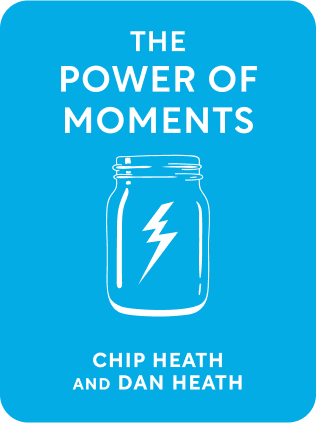

This article is an excerpt from the Shortform book guide to "The Power of Moments" by Chip Heath and Dan Heath. Shortform has the world's best summaries and analyses of books you should be reading.
Like this article? Sign up for a free trial here .
Why is giving recognition for excellent work important? What’s the best way to show someone their effort has been noticed and appreciated?
There’s a common misconception that people who work hard are likely to feel proud of their work. But it’s not so simple: Pride doesn’t come from hard work alone—it comes from the results of your hard work being noticed. In their book The Power of Moments, Chip and Dan Heath suggest two ways of giving recognition: 1) give frequent, personal recognition, and 2) make progress visible.
We’ll explore both of these methods below.
1) Give Frequent, Personal Recognition
Giving recognition is the easiest way to let others take pride in their progress. Pride that comes from recognition is especially memorable—largely because it’s so rarely practiced. Most employers report that they give out a good amount of praise to employees for their accomplishments and work…but most employees report feeling that they’re not getting nearly enough recognition.
The discrepancy is largely due to the occasions that employers use to hand out praise; usually, acknowledgment comes on the heels of a large success. These large accomplishments are hard to miss, and they are an easy target for praise. To the employers, piling on the recognition in these moments feels like enough. On the other hand, employees feel underappreciated. People thrive on regular recognition of their continued efforts, not just for the big, easy-to-spot achievements.
(Shortform note: Recall the progress principle—boosted mood and productivity are seen in team members who have a consistent sense of their progress. Consistent recognition meets this need as well as reminding the team member that their work has meaning.)
Recognition is not handed out nearly as frequently as it should be. If you are congratulated once every five years, when you do something really extraordinary, you don’t have a regular source of pride in your work.
The solution to dissatisfying, sporadic recognition is simple: Focus on the frequency of your praise, not the grandeur. Handing out regular praise and multiplying the occasions for pride is a one-way ticket to having people who take pride in their work and feel satisfied with the return on their efforts.
(Shortform note: Eliminating the discrepancy between the perceived expression of praise and the perceived reception of praise is important to ensure high team member retention. In How Will You Measure Your Life, Clay Christensen says employees ask themselves, “Do I have the opportunity to do meaningful work? Am I being recognized for my contributions?” Employees who say “no” to these types of questions will soon start thinking about moving on to another workplace where their boss expresses regular appreciation.)
What Makes Recognition Truly Memorable?
Not all frequent praise is created equal, however—a pat on the back or a congratulatory email will give the recipient a small glimmer of pride, but it will be a forgettable moment. The Heaths explain that truly meaningful and effective recognition—the type that creates a moment defined by pride—is personal. Personalized recognition is your opportunity to tell someone, “I see the effort you’re putting in, and more importantly, I see you.”
They give the example of Keith Risinger, who works in leadership development at pharmaceutical company Eli Lilly. Risinger regularly hands out awards to his employees for their small victories and improvements, personalizing each award to the accomplishment. For example, for an employee who has gotten better at listening to clients’ needs, he awarded a pair of Bose headphones. For another employee who came up with a customized approach to a client’s problem, he gifted a single-serve Keurig machine. His awards are somewhat silly, but their creativity and thoughtfulness create powerful moments of pride for his employees.
(Shortform note: The Heaths attribute the memorableness of Risinger’s awards to their being personal. However, another reason these awards are so memorable and meaningful is their silliness. In many work environments, award systems lack novelty—predictable, professional “Employee of the Month” emails easily blend into the general flatness of the workday. On the other hand, silly and unexpected awards like Risinger’s engage his employees’ brains with the appeal of variable reward and therefore stand out in their memories.)
2) Make Progress Visible
The Heaths point out that progress is often incredibly difficult to measure or recall.
(Shortform note: In many work settings, employees do have clear indicators of progress, such as KPIs. This section focuses on cases where there aren’t clear metrics of growth or improvement, such as learning a new skill like baking or skateboarding.)
To bring out someone’s pride in their “invisible” progress, the Heaths encourage you to dig up and recognize milestones that were achieved in the past but may not have been noticed or celebrated at the time. As you know from the section on “thinking in moments,” the celebration of largely-unseen milestones—not the big, obvious ones—is especially memorable and meaningful.
(Shortform note: Celebrating unseen progress is especially important for those for whom “seen” progress doesn’t come easy. Studies show that schools are increasingly focusing on grades as a measure of progress, while ignoring academic progress that doesn’t visibly “move students up the ladder”—asking for help, expressing creativity, or collaborating with others, for example. As a result, students who show progress in these “invisible” areas instead of the “important” areas lose their motivation to improve. It’s important to remember that both seen and unseen progress are all part of the same path forward.)
If you have the foresight to document progress as it happens, you can highlight the uncelebrated milestones and uncharted progress that deserves recognition, creating defining moments of pride for someone who may not realize just how far she’s come.
Example: Show Progress With a “Year In Review” Video
Imagine your daughter has been practicing ballet for several years. She’s achieved evident milestones and experienced natural occasions of pride: her first recital, getting the part she wanted in her company’s production of The Nutcracker, being invited to make an appearance in her company’s promo video. She knows she’s making progress, but she can’t recall specific improvements.
Each year, you give her a video that documents her practice over the course of the year, so that she’s regularly able to compare her current self side-by-side with her past self. She thinks, “At the beginning of the year, I couldn’t do pointe for more than 5 minutes without a break…now I don’t need a break at all!” In bringing up her past progress, you’ve given her a memorable way to recognize and feel pride in the results of her hard work.

———End of Preview———
Like what you just read? Read the rest of the world's best book summary and analysis of Chip Heath and Dan Heath's "The Power of Moments" at Shortform .
Here's what you'll find in our full The Power of Moments summary :
- How to make everyday experiences meaningful and memorable
- A look at the four elements that create meaning
- How your senses can play a role in elevating everyday moments






